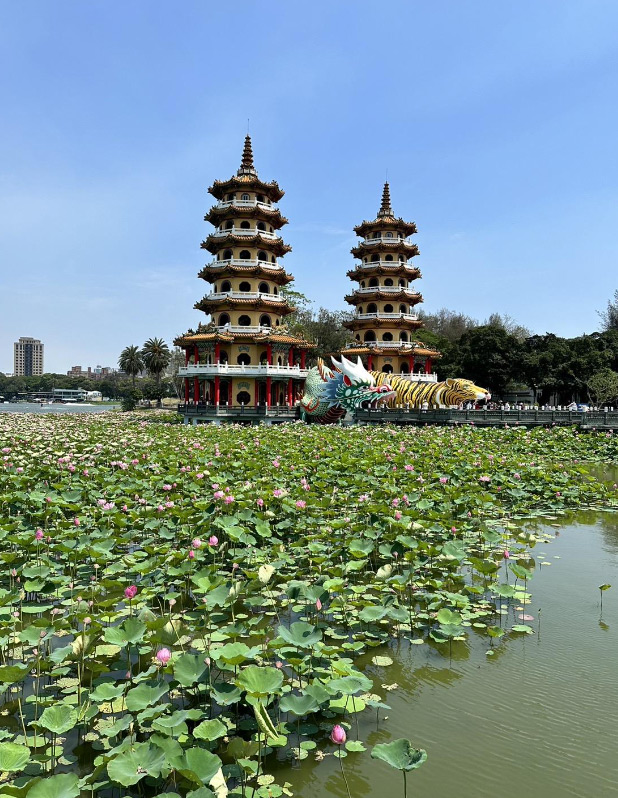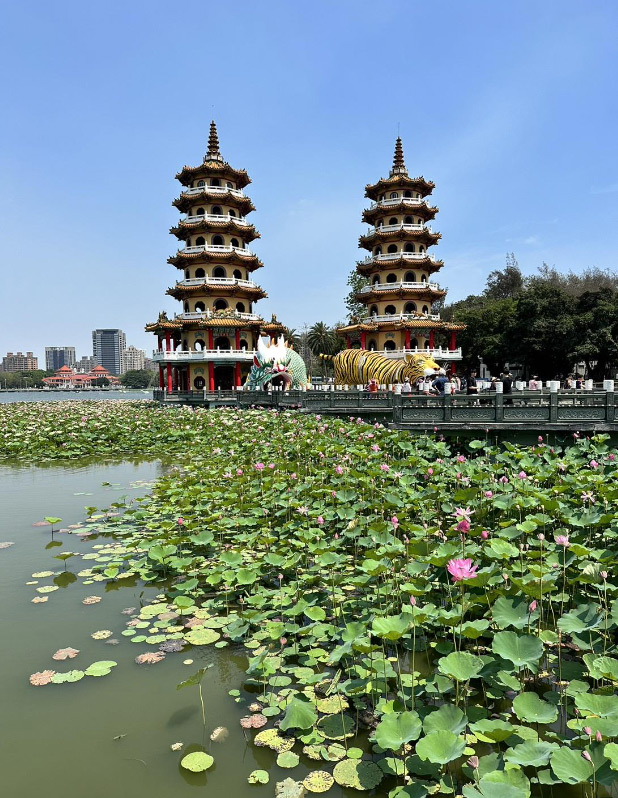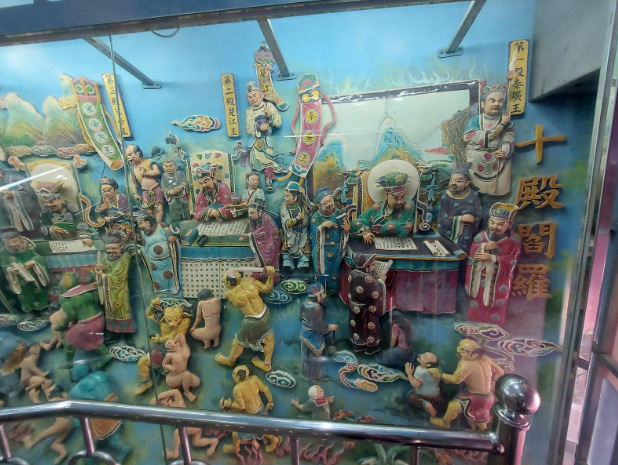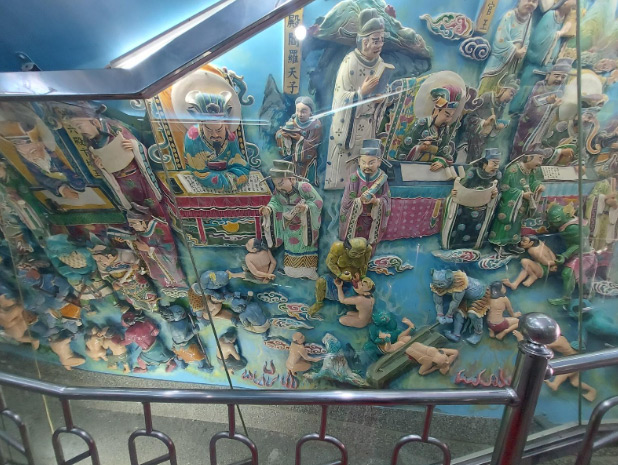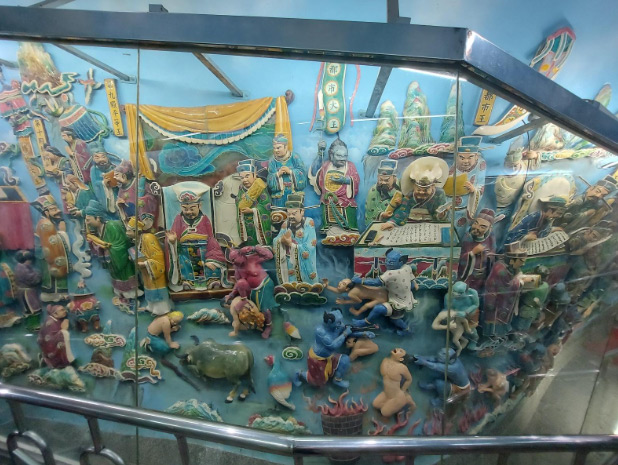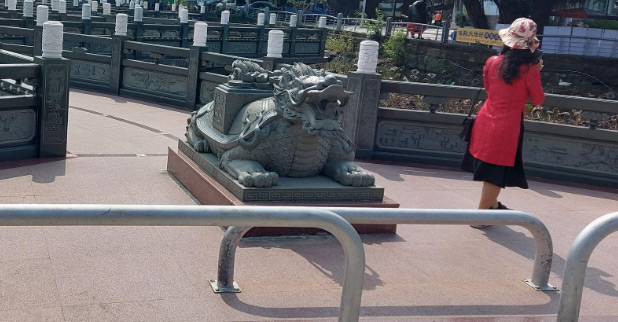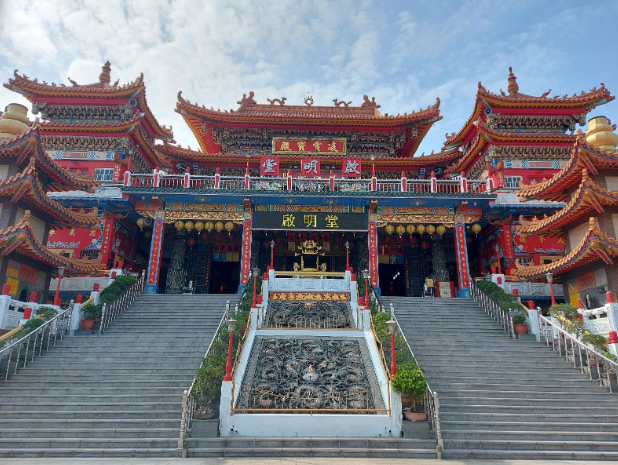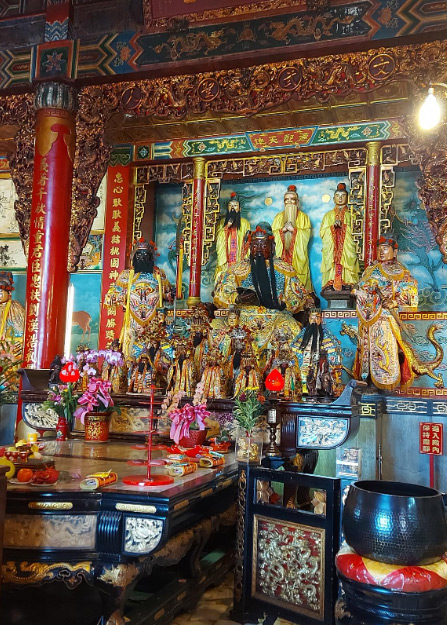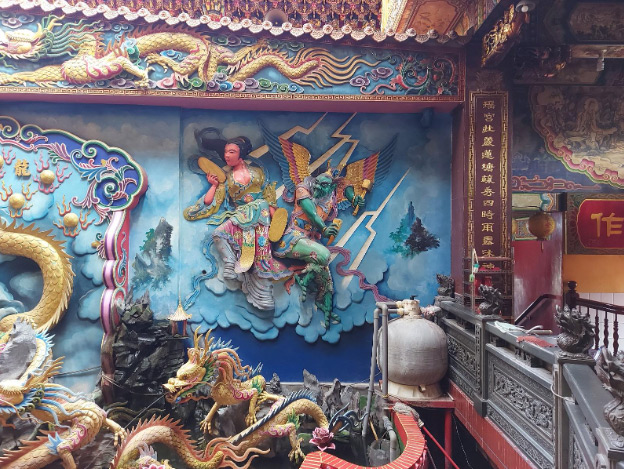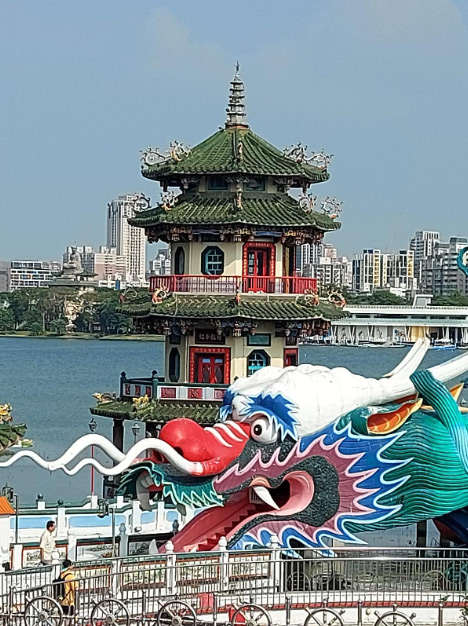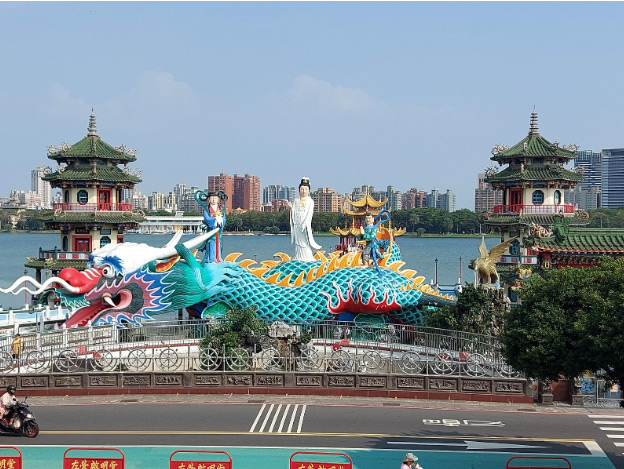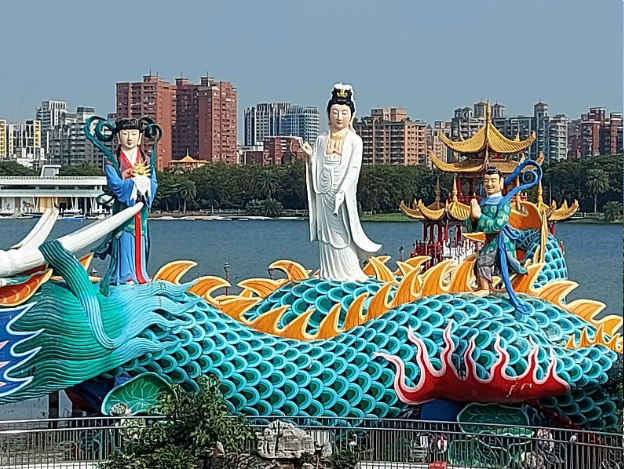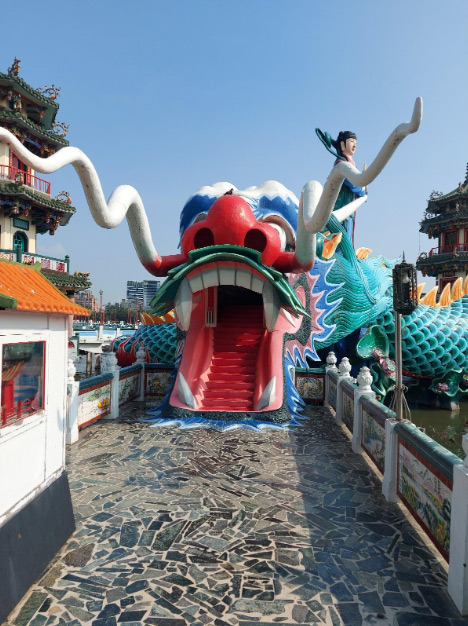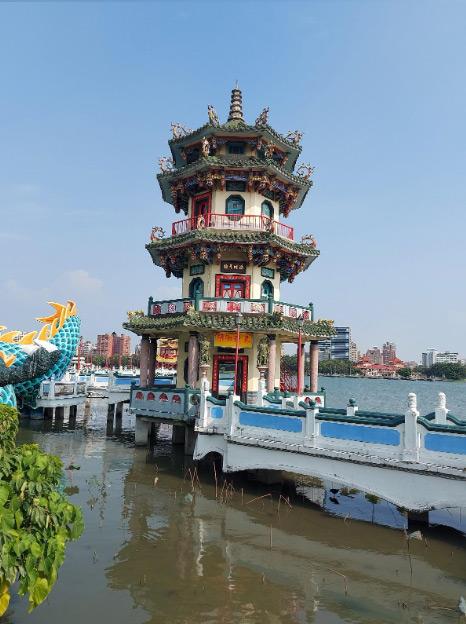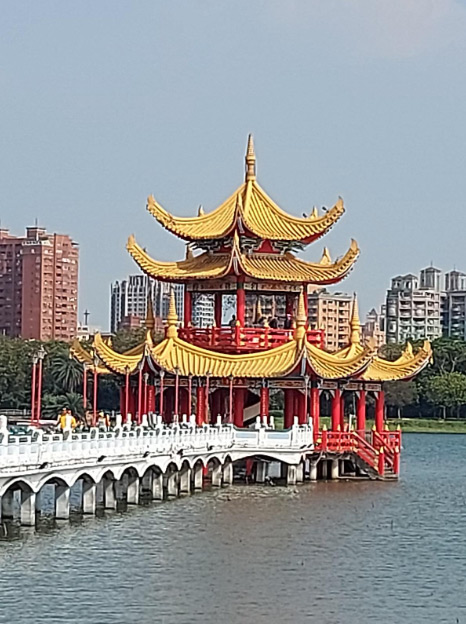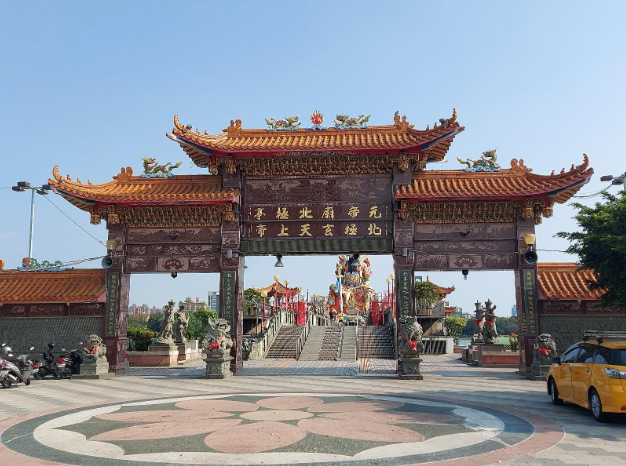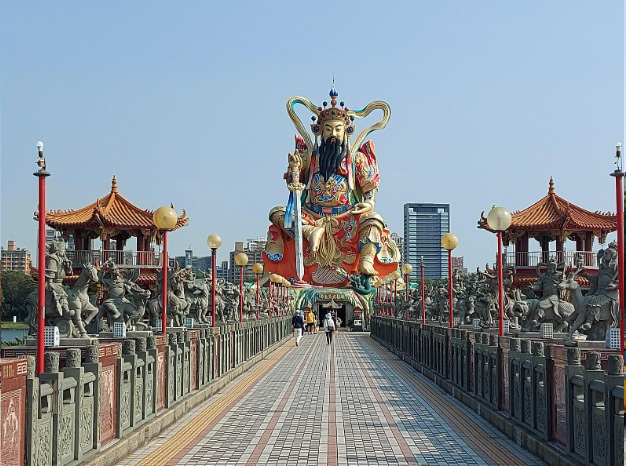by Luis
Upon arriving, many visitors wonder how many temples there are in this small town. While others might be thinking, “are there other religions?” In fact, “The old town” has the highest temple density in Taiwan. However, religion-wise, not all temples are the same. The four predominant types are Taoism, Buddhism, Confucianism, and Folk beliefs. Many locals visit different temples for prayers and spiritual serenity. On one hand, because most regard them all as institutions promoting pious doctrines; on the other, simply because many believers are not that aware of their differences either. Religious tolerance has been practiced since the era of early Chinese settlements in Taiwan. In time, all religions ended up intertwined, and hard to make out. This was something that went slowly digressing from the original religious practices taught by their ancestors back in China, and one of the reasons could be lack of resources in the frontiers. Back then, building materials were scarce and hard to get. In most cases, roof tiles, bricks, and mortar would have to be outsourced from the other side of the Taiwan strait. Kilns to fire building materials arrived much later after the Japanese occupation period (1895). This accounts for the so many different types of temples seen not just here in “the Old Town”, but also in the rest of Taiwan as well. I think it’s safe to say that variety does indeed spice up the beauty of life.
慈濟宮 Taoist Master of medicine
Have you ever imagined what it is like to be sick without doctors or hospitals nearby? Many people in the past could only leave everything to chances and face their own destiny. Nonetheless, the ancient Chinese have their own ways to deal with this. Pao-sheng Emperor is said to be the merciful protector of faithful believers. And when it comes to medical skills, he has yet to meet any match. According to legend, no illness is uncurable, even the dead come back to life after his treatment. I think it’s fair to say that he is the eastern counterpart of Jesus Christ.
Originally named Wu-tao, Pao-sheng Emperor was born in the Sung dynasty, which is roughly a millennium ago. As a child, he was smart and adept showing capability in different subjects of learning. The story goes, at the age of 17, after a divine apparition, he was granted the magical power of treating illnesses as well as exorcism. And since he was always generous in addition to compassionate, people have always seen him as the avatar of the deities from heaven.
Crouching tiger and hidden dragon…
One day walking down the mountain trails to gather herbal medicine, he met up with a panting and almost dead tiger. Being merciful even towards animals, he approached the beast offering his help. After checking, he found the problem in its throat and reached out with his arm to remove a hair pin from very deep inside. At once, the tiger was relieved from the agony of being chocked to death, and confessed that he had just devoured a lady on her way downhills. The doctor made the beast promise not to ever do that again and befriended this fearful but gallant patient from the wild.
The fame and reputation of this miraculous physician did not stop among human beings. Even the mystical dragon could not resist the idea of booking an appointment. Coming down with flu and serious eye infection, the dragon resorted to seeing him after showing up as an ordinary mortal in disguise. In almost no time, the magnificent doctor uncovered its deceiving appearance while offering his altruistic medical treatment. And very quickly, some eye drops helped the dragon regain its once heathy eyesight. As a gesture of gratitude, both the tiger and the dragon have remained at the disposal of Pao-sheng Emperor, eliminating not only wrongdoers but also sinister beings from the underworld. This is a genuine proof of the divine power that he once received from heaven to keep all mortals from the pain of health issues as well as the intimidation of evil spirits.
Since his skills and knowledge in medicine was unsurpassed, it’s not hard to imagine why people come to worship him. One thing that sets this temple apart from all others is the Chinese medicine prescription granted to those who pray for health. After incense burning, prayer, and moon blocks casting, the believer gets a divine consultation by drawing sticks similar to a fortune stick oracle, but a little smaller in size. Only that in this case, instead of an explanation of their luck, they receive an instruction of what kinds of Chinese medicine to take. This sounds like a medical appointment, after which the prescription may be taken to a Chinese medicine store to have it filled. For centuries, this practice became a social norm until the advent of modern medicine and health care.
In Ming dynasty, or roughly 500 years ago, the emperor granted him a title of honor, "Imperial Inspector at Heavenly Gate, Miracle Doctor of Compassion Relief, Great Taoist Immortal, and the Long-lived Unbounded, Life-guarding Emperor” (恩主昊天金關御史慈濟馨鑒妙道真君萬賽無極保生大帝). This being complicated and too long to remember, many followers have a hard time even pronouncing his entire name. For the sake of simplicity, people throughout history call him by the name of the last four Chinese characters from the title, Pao-sheng Emperor.
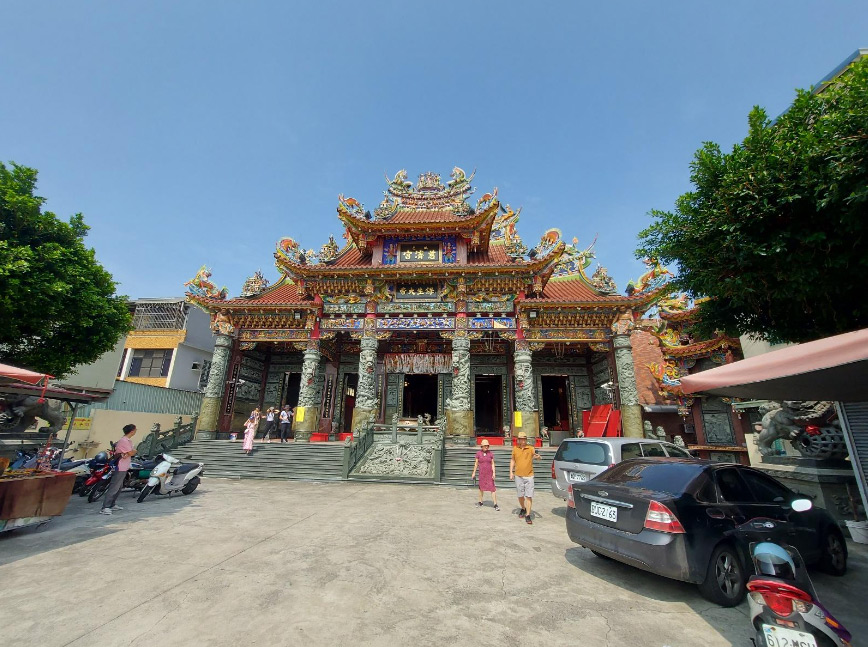
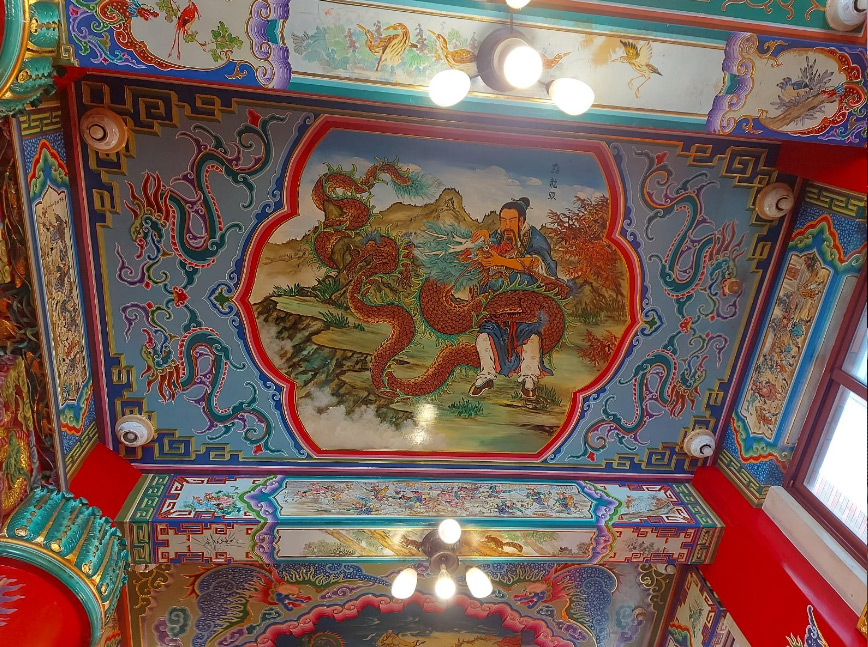
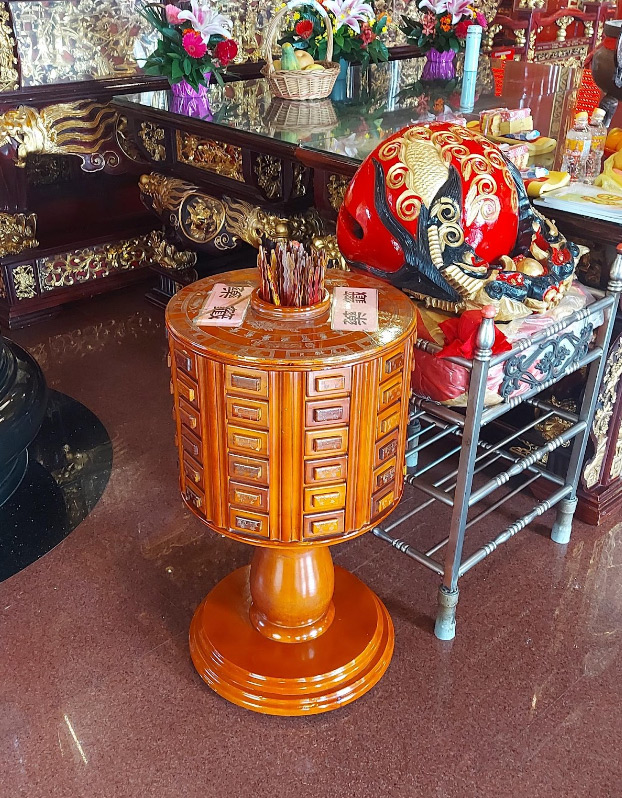
龍虎塔 Majesty and Gallantry
If you ever travel to Kaohsiung, this is a spot you definitely can’t miss. It is among the top ten must-go places in Taiwan. Located at the southern end of the Lotus Pond are the magnificent Dragon and Tiger pagodas. Nothing compares to the uniqueness and craftmanship of this monumental Chinese traditional architecture, which in the eyes of many can be even seen as an installation art on steroids.
To the delight of visitors, this place is just 10 minute-walk from Zuoying train station (TRA), or you can rent a Youbike and leisurely pedal your way from the nearest MRT station, the Kaohsiung Arena.
Since early recorded history, the Turtle Mountain in front of us had always been seen as the patron protector of the village. In the distance, the mountain resembles a turtle drinking water from the pond, and hence the name. Early residents enjoyed year after year of prosperity and growth. Until disaster struck, a series of unexplainable and apprehensive incidents took place in the area. The pond water turned red, fish died in big numbers, the weather became unpredictable, and what not. According to some accounts, the reason why this area lost its once perfect condition was simply because the natural harmony of the place had been upset up to three times throughout history. That harmony is called feng-shui (風水) in Chinese, and geomancy in English. Different versions circulated in the public lore; but the following is the most prevalent. The first incident occurred in the 19th century, when prestigious people chose the Turtle Mountain as the burial place for their loved ones. It is said that the tomb stones simply obstructed the nose cavity of the animal, depriving it of fresh air. The second took place in the 1940s, when the Japanese government decided to open the street that currently runs adjacent to the ancient city wall. This time, the situation got even worse as the already weak animal was being strangled almost to death. The third and final blow occurred after the restoration in 1949, when the national government decided to build a tower at the peak of the hill in memory of a Navy general (桂永清). And this was the final nail on the coffin. The ill-fated mythological animal breathed its last, never to fulfill again its faithful duty of safeguarding locals.
In 1969, a divine revelation came from Pao-sheng emperor, whose dedicated temple is located at the foot of the turtle mountain. He indicated that a big disaster was imminent and people must brace up for this forthcoming ordeal by any means. Therefore he commissioned the building of the Dragon and Tiger towers, stipulating that the height should be even taller than the existing memorial Tower in order to suppress the energy, or simply chi in Chinese. Shortly after the completion, the plan paid off. In 1977, a big typhoon swept across Taiwan hitting hard its southern area, but fortunately the number of losses and casualties were kept at a minimum considering the magnitude of the wind. Many people interpreted the aftermath as a sign of divine protection, which otherwise would be unthinkable. From then on, the Dragon and Tiger pagodas have stood firm and tall not only by the shore of the Lotus pond, but also in the hearts and memory of the grateful locals.
The pagodas feature seven stories in all with extended pointed roofs to ensure their height. As for the architecture style, yellow walls on the exterior, red pillars and orange roof tiles remind us of the Chinese classics. But according to reliable sources, the top floors house a talisman in each of them to protect the vicinity with their magical power. The dragon and the tiger at the foot of the pagodas display vivid and vigorous energy anticipating the content of the themes depicted on the inside. As you make your way into the mouth of the dragon, you will appreciate the twenty-four filial piety stories on the left and the hellish gory images in the purgatory on the right. The message can’t be clearer, failing to respect and obey parents will unavoidably lead to dreaded consequences. In the tiger tunnel, the seventy-two disciples of Confucius the great master and the thirty-six generals stand on each side of the passage. Perhaps in the traditional Chinese philosophy, this is the epitome of what all persons should be like: strong both in knowledge and body, reflecting something similar to the harmony that westerners call spirit, body and soul. After walking out from the mouth of this fearsome beast, you’ve accomplished an auspicious endeavor, because “exiting the mouth of the tiger” implies good luck in Chinese.
The connecting path from the shore is called “the bridge of the nine bends.” Interestingly, as you make your way in and out, such name simply doesn’t “add up”, there are only seven zigzags in total. After some explanation from tour guides, “nine” is only a metaphorical expression referring to “many” in Chinese. In reality, “seven” is a connotation coming from the sword of the seven stars. But I guess that’s good topic material for another episode in the future. And before you leave, don’t forget to touch a couple of times the “gold dumplings” on the back of the mythological animal standing at the entrance. This is a hybrid between a dragon and a turtle, and its name is Pi-xi. The Chinese regard this gesture as a sign of financial prosperity and good fortune. Until next time!
啟明堂 Four in One
For those who want to worship the many gods of the four religion types in Taiwan, visiting this temple is indeed the way to go. It will not only save you the inconvenience of going around different temples to worship but also allow you to see the marvelous feat of engineering behind the ordinary and typical façade. Chi-Ming Temple translates into “divine enlightenment”, which is the true purpose of this building. There is a temple behind the main temple, another one on top, and then another one below; making it worthy of the name, “four in one”. Inside the main temple is Kuan-Kong, the saint worshipped by all four religions in Taiwan. This larger-than-life figure was a loyal general working for a warlord roughly eighteen hundred years ago. The narrative of his stories falls somewhere between reality and fiction. But despite the apocryphal nature, many followers are both devout and pious. He’s also called the saint of literature and war due to his passion and prowess in relevant subjects. As you visit the main temple, you’ll see him reading from a scroll in his hand. That book is the all-time famous “Spring and Autumn”, one of the many Chinese classics by the great master Confucius. This by all means attracted believers from all walks of life, such as teachers, students, accountants, soldiers, police officers, and even members of underground organizations of gangsters. You wouldn’t be too far off to include just as many other professions among the worshippers.
Other gods to worship here include Confucius, Sakyamuni buddha, Jade Emperor, Kuan-in buddha, and many deities often mentioned in Buddhism, Taoism, Confucianism, and local folk beliefs. Perhaps it was out of hospitality, or maybe due to religious tolerance, the shrines in the adjacent temples are dedicated to numerous other gods just mentioned, which re-confirms again its four in one feature. For those looking for an easier solution; no offense, but this is like a “religious supermarket” since there’s a god for just about everyone.
春秋閣 and 五裡亭 The Spring and Autumn Pavilions and the Five Mile Gazebo
Back in 1953, the only architectures on the surface of the pond were the Spring and Autumn Pavilions. The other pagodas and statues we can see today were not even built yet. In fact, in the knowledge of most locals the name of these two towers came to be the equivalent of the Lotus Pond. Green roof tiles, yellow walls, octagonal cross-section towers are all quintessential elements of the Chinese classical style.
元帝廟北極亭 Xuan-Tien Emperor
For good reasons this area has the highest temple density in Taiwan. In fact, many different gods and deities from China can be found here. Among them, Xuan-Tien Emperor stands out for his connection to astrolatry. What westerners call the Big Dipper (or the Plough in the UK), the ancient Chinese call it Xuan-Wu, the name of a dreadful menacing monster. During the Tang dynasty, it was depicted as a hybrid of a turtle and a snake. It’s interesting that depending on who you ask, these seven stars of the constellation can be interpreted as different things. Long story short, Xuan-Tien Emperor saved the day for everyone by subduing the man-eating monster under his power. As you make your way to the large statue on the Lotus Pond, you’ll see a majestic 24 meter tall ancient warrior with a sword in his left hand and stepping on a turtle and a snake under his right foot. In fact, it’s the tallest statue built on the water in southeast Asia. Different narratives circulate as for how Xuan-Tien Emperor made his way from northern China to the Lotus Pond. But I personally find it obvious because the most important elements of his story can be found here. The Turtle Mountain and the Snake Mountain witnessed the rise and fall of the Feng-Shan Old Town and they also played a vital role in the selection of the location to start a trade settlement in the early times. And it’s not by coincidence that the sword has a peculiar name, the sword of the Seven Stars. According to legend, it’s a property of Pao-Sheng Emperor, the main God in the temple across the street from the Dragon and Tiger Pagodas. Xuan-Tien borrowed the sword under the condition of temporarily sending his 36 warriors at the disposal of Pao-Sheng. In the meantime, each of them will have the other’s possession until all demons and evils in the world are kept at bay. This is another example of what a good neighbor should be like; after all that’s what friends are for.
The most interesting thing about walking around in old towns like this is that it’s full of breathtaking and fun stories from the ancient past. Even locals find it astonishing when many dots in their minds are slowly connected together into one solid piece. It’s fair to say that once is never enough to comprehend and enjoy the rich history behind. You need to visit the Old Town as many times to feel and even experience the mindset of those early settlers and then make sense of it all.

